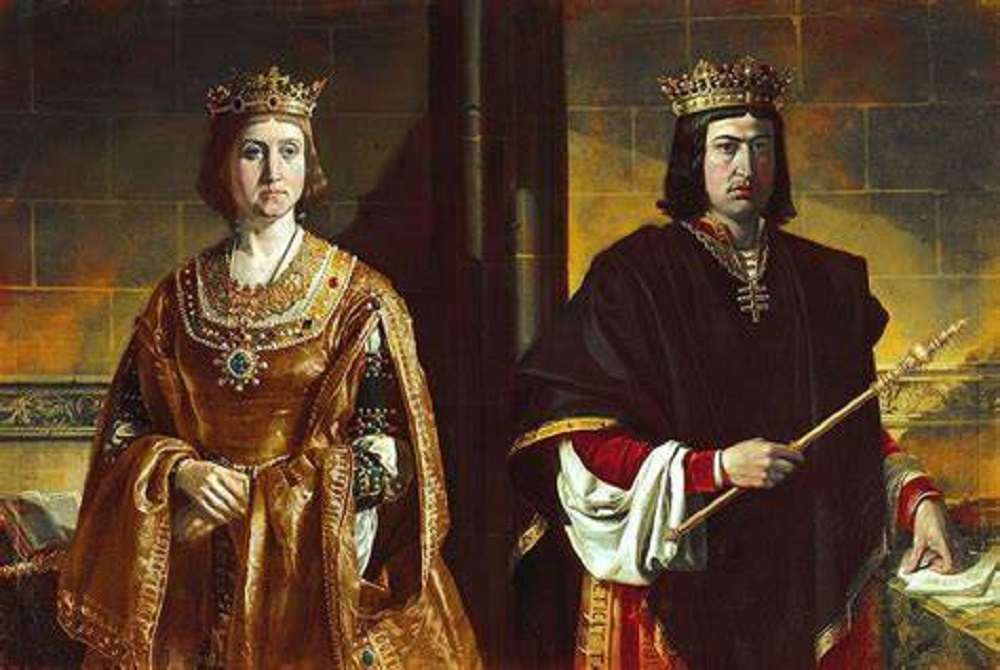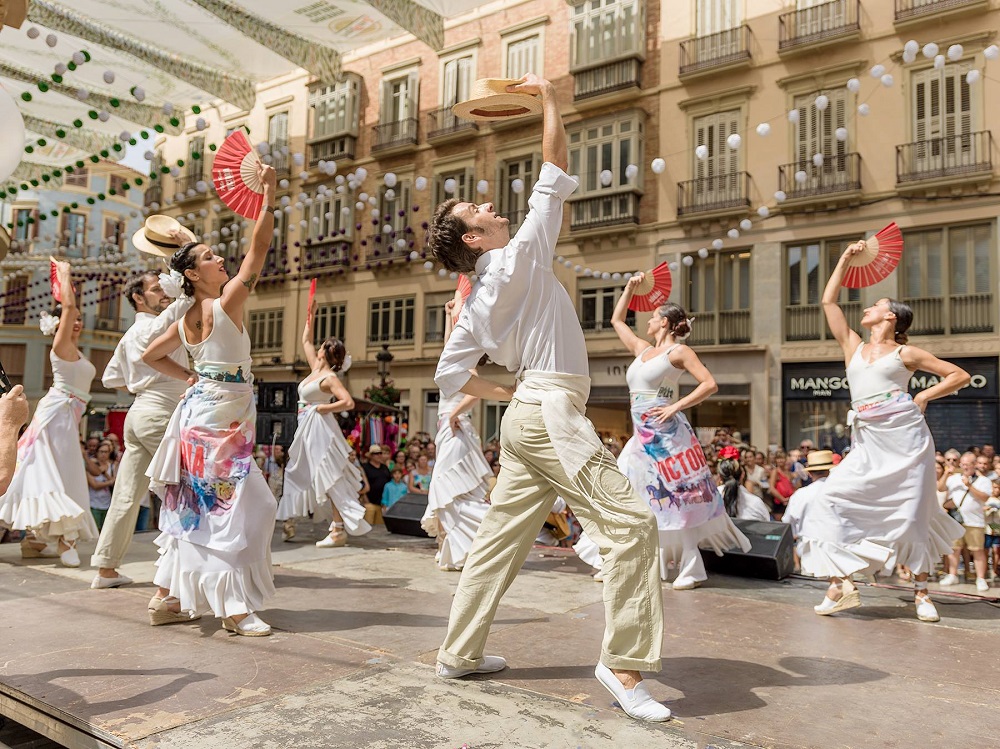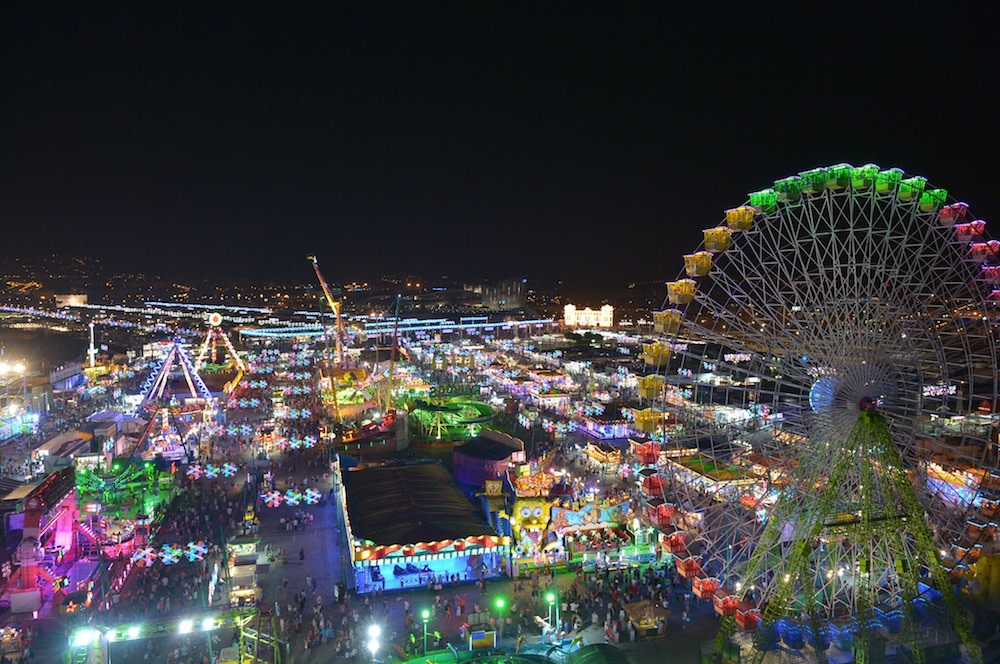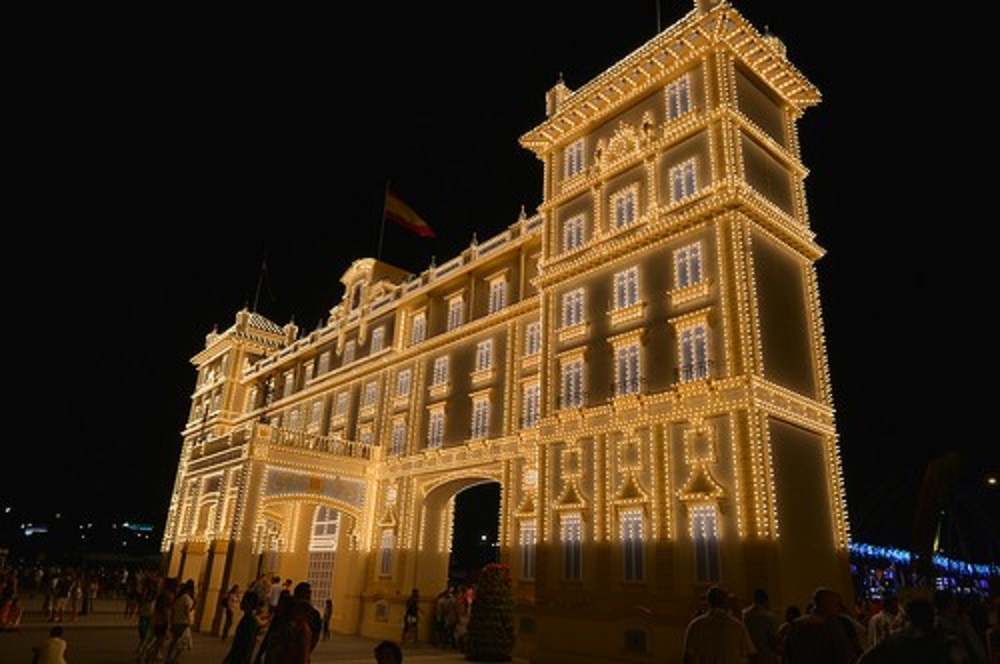La Feria de Malaga is a vibrant festival that takes place every August in the heart of Andalusia, in the city of Malaga. This week-long event is steeped in history and filled with joyous festivities, transforming the city into a colorful and lively playground.
The festival dates back to 1487, commemorating the capture of the city by the Catholic Monarchs, Isabella I of Castile and Ferdinand II of Aragon. Over the centuries, it has evolved into a grand celebration of Andalusian culture, attracting locals and tourists alike with its music, dance, and gastronomy.
If you’re considering taking Spanish lessons in Malaga during this period, keep reading for more informationSo if you are planning to take Spanish Lessons in Malaga in those dates continue reading.

The Culture of Fairs in Spain
Fairs, or ‘ferias’, are an integral part of Spanish culture. Celebrated in towns and cities across the country, these events are deeply rooted in Spanish tradition and embody the vibrant spirit of Spain. Each feria has its own unique characteristics, reflecting the local culture and traditions of its region, but they all share a common theme of celebration and community.
In Spain, a feria is more than just a festival. It’s a social event that brings together people of all ages and backgrounds. It’s a time for families to gather, for friends to catch up, and for communities to come together in celebration. It’s a showcase of local culture, featuring traditional music, dance, and cuisine.
The culture of ferias in Spain is one of joy and camaraderie. It’s about celebrating the local culture, sharing good times with friends and family, and enjoying the best of what Spanish life has to offer. Whether it’s the lively music, the delicious food, or the festive atmosphere, a feria is a celebration of life and a testament to the warm and welcoming spirit of the Spanish people.
The Vibrant Atmosphere of La Feria de Malaga
La Feria de Malaga is a festival of two parts, each offering a unique experience. By day, the city center is the heart of the celebration. The streets are lined with colorful decorations, and the air is filled with the sounds of traditional Spanish music. Locals and tourists alike fill the streets, many dressed in traditional Andalusian attire, adding to the festive atmosphere.
By night, the festival moves to the Real de la Feria, a fairground located on the outskirts of the city. Here, you’ll find a carnival-like atmosphere with amusement rides, food stalls, and music venues known as “casetas”. These large tents host a variety of performances, from traditional flamenco shows to modern pop concerts, offering entertainment for all ages and tastes.

Dressing for the Occasion: Traditional Attire at Spanish Fairs
One of the most striking aspects of Spanish fairs is the traditional attire worn by attendees. Dressing up is a significant part of the fair experience, adding to the festive atmosphere and allowing participants to express their cultural pride.
Women often wear the ‘flamenca’ or ‘sevillana’ dress, a colorful and flamboyant outfit that’s synonymous with Spanish fairs. These dresses are characterized by their ruffled skirts, fitted bodices, and vibrant patterns. Accessories such as large hoop earrings, flower hair clips, and the traditional Spanish shawl, or ‘mantón’, complete the look.
Men typically wear the traditional ‘traje corto’, a short jacket, tight trousers, and a wide-brimmed hat known as a ‘cordobés’. This outfit is often completed with a waistcoat and a colorful sash.
The Most Popular Games at Spanish Fairs
These games, often played for prizes, are a fun way for attendees to engage with the fair and each other. Here are some of the most popular games you might encounter at a Spanish fair:
- Lotería: Similar to bingo, Lotería is a game of chance that’s popular at Spanish fairs. Players mark spots on a tabla, or board, with a chip and try to fill the board before all others.
- Marbles (Canicas): A classic game that’s popular with children, players try to knock their opponent’s marbles out of a designated area with their own marble.
- Target Shooting (Tiro al Blanco): In this game, players use a toy gun to shoot at targets. The more targets you hit, the bigger the prize.
- Fishing (Pesca): This is a fun game for younger attendees. Players use a fishing rod to catch toy fish, often winning a prize based on the number or type of fish they catch.
- Darts (Dardos): A staple at many fairs, players throw darts at a board to score points. The player with the highest score typically wins a prize
A Taste of Andalusia: Foods to Try at La Feria de Malaga
Spanish fairs are not just a feast for the eyes and ears, but also for the palate. La Feria de Malaga is no exception, offering a variety of traditional Andalusian dishes that are sure to delight food lovers. Here are some foods you must try when you visit:
- Pescaito Frito: As Malaga is a coastal city, seafood is a staple in its cuisine. Pescaito Frito, a delightful array of fried fish, is a must-try. From anchovies to squid, the seafood is lightly battered, fried to perfection, and served with a squeeze of fresh lemon.
- Tapas: No visit to a Spanish fair would be complete without indulging in tapas. These small dishes are perfect for sharing and offer a variety of flavors. From traditional options like Spanish omelette (tortilla española) and Iberian ham (jamón ibérico), to local specialties like ajoblanco (a cold garlic and almond soup), the tapas at La Feria de Malaga are a culinary adventure.
- Paella: This iconic Spanish dish is a common sight at fairs. Cooked in large pans, paella is a delicious combination of rice, saffron, and a variety of meats and seafood. It’s a hearty and flavorful dish that’s perfect for refueling after a day of festivities.
- Churros con Chocolate: For something sweet, look no further than churros con chocolate. These deep-fried dough pastries are served with a cup of thick, rich chocolate for dipping. They’re the perfect sweet treat to end your culinary journey at the fair.
- Buñuelos: A popular sweet treat at Spanish fairs, buñuelos are small, round pastries that are deep-fried and often served with a dusting of sugar. They’re light, fluffy, and the perfect way to satisfy your sweet tooth.

The Setting of the Celebration: Where La Feria de Malaga Takes Place
La Feria de Malaga is held in the beautiful city of Malaga, located in the autonomous community of Andalusia in southern Spain. Known for its stunning beaches, historic architecture, and vibrant arts scene, Malaga serves as the perfect backdrop for this grand celebration.
The festival takes place in two main locations within the city:
City Center: During the day, the historic city center of Malaga is transformed into a festive hub. The streets are adorned with colorful decorations, and traditional music fills the air. The city center’s plazas and streets, such as Calle Larios and Plaza de la Constitución, become stages for live performances and dancing.

Real de la Feria: As the sun sets, the festivities move to the Real de la Feria, a large fairground located on the outskirts of the city, near the Victoria Kent train station. This is where the night fair takes place. The fairground is filled with ‘casetas’ (large tents), amusement rides, food stalls, and music venues, creating a carnival-like atmosphere that lasts until the early hours of the morning.

Malaga, with its sun-drenched beaches, historic architecture, and vibrant arts scene, is the perfect backdrop for La Feria de Malaga. The city is a blend of the old and the new, where centuries-old castles stand alongside modern art museums, and traditional tapas bars coexist with gourmet restaurants.
During La Feria, the city’s cultural offerings are amplified. The streets become a stage for flamenco dancers, the air is filled with the aroma of traditional Spanish cuisine, and the city’s landmarks are illuminated in a dazzling display of lights. It’s a time when the city’s cultural heart beats louder than ever, offering a unique opportunity to immerse yourself in Spanish culture and tradition.






